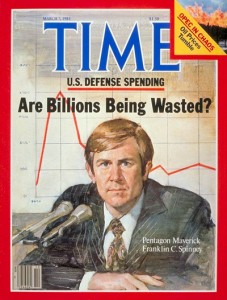
Anti-Access, Area Denial Israeli Style
Gaza was recently hit by a severe winter storm, and it lacks the electricity, water, and sewage infrastructure to deal with the crisis. Here, FYI, is report in Ma’an, a Palestinian news agency, describing the disastrous effects of this storm. Among other things, the report explains how electricity, fuel shortages, and a break down of the sewage system have limited the capacity to drain the flooded areas with cold sewage-laden water.
Gaza’s flooded streets.
Even before the rains, sewage was flooding into the streets, because of infrastructure-based pumping problems (e.g., shortages of electricity and fuel). Also, salt water intrusion into the aquifer is steadily making drinking water unfit for human consumption, a factor compounded by the recent flooding. The report argues that these problems are combination of “nature” and “nurture,” in that the natural disaster is made far worse by “nurturing” effects of Israel’s ongoing siege.
Obviously, the Ma’an report is written from a Palestinian perspective. Some readers, especially those with a pro-Zionist bent, will inclined to dismiss this report as biased, because it focuses solely the effects of Israel’s blockade, and does not mention how the policies of Hamas and Egypt have contributed to the Gaza crisis. To be sure, there is a very small kernel of truth in such a critique, particularly with respect to Egypt, which is a de facto partner in Israel’s siege of Gaza. But it is absurd to blame the human tragedy in Gaza on the inmates of the ghetto.
The reality is that bulk of the crisis in Gaza is a direct result of Israel’s oppressive policies over the long term, made more acute by the current Siege of Gaza — i.e., blockade coupled to episodic bombing — that is now well into its seventh year. In effect Israel’s policy is to pacify Gaza by enervating Gaza’s population via the simple expedient of making life miserable and hard for all Gazans so that all their human energy is sapped by the desperate activities needed to scratch out a meager life of bare-bones survival. Can there be any wonder that militant elements, like Hamas (the formation of which, it should be remembered, was encouraged by Israel in the late 1980s as an offset to the PLO), have emerged to resist such an inhuman policy.
Today almost 1.8 million Gazans are trapped inside the 360 square kilometer cage known since the end of the 1948 war as the Gaza Strip. That strip is now the world’s largest and most densely populated ghetto. According to data in Wikipedia, the only semi/fully autonomous regions having a greater population density are the rich urban statelets of Hong Kong, Singapore, Monaco, and Macau, rich enclaves with per capita incomes of $53,000, $61,000, and $77,000 respectively.
A necessary if not sufficient condition for the prosperity of these industrious urban economies is that their borders be open to the free flow of trade and money. Like these statelets, Gaza is an urban economy. Moreover, within the Arab culture, its Palestinians are relatively well educated and noted for their industriousness and entrepreneurial attitudes. But unlike the rich trade-based city states, Gaza is exceedingly poor, and growing poorer by the day, with per capita GDP of only $3100. More to the point, although Gaza will never be a Singapore, Gazans cannot even reverse their deteriorating lot in life, because they are hermetically sealed off from the rest of the world.
Indeed, unlike the Pentagon’s “anti-access” fantasies about the future military systems of China and Iran and their purported threats to the “global commons (see DoD’s most recent QDR and do word searches on ‘anti-access,’ ‘area denial,’ or ‘global commons’ ), Israel has put into place a real anti-access, area denial strategy as defined by the red lines in this map.
Gaza siege map.
Lock 1.8 million people inside the red lines, starve them, deny them water, bomb them, and you get the picture.
Note how the map shows that Gaza’s fisherman are now restricted to fishing within a 3 mile limit. This is tantamount to a denial of fishing rights in the global commons for the inhabitants of a shallow enclave with a relatively long sea coast. Also, given the possibilities of natural gas field further off Gaza’s shore, Israel’s anti-access policy insure the Gazans will never get a piece of the oil/gas action. Having sailed in this region, I can assure readers that Israel’s much larger no-float zone (hinted at by the hashed lines in the map) is strictly enforced by aerial surveillance, backed up by high speed and heavily-armed gunboats, helicopters, and fighter aircraft.
It is not as if Gaza has a naval power projection capability: Here is a picture of the Gaza fishing fleet that is now constrained to the 3 mile limit. Beneath it is an overhead photo of the Port of Gaza — note there is one small pier with docking space for one small ocean going coastal trader. For a size appreciation, note that the vessels around the periphery are the fishing boats in the picture.
Gaza’s fishing fleet.
Port of Gaza.
Interested readers who want to learn more about the Gaza Siege will find two recent UN reports (here and here) that summarize its effects, and more importantly, the inevitability of an even greater disaster that siege portends for Gaza’s immediate future.
Franklin “Chuck” Spinney is a former military analyst for the Pentagon and a contributor to Hopeless: Barack Obama and the Politics of Illusion, published by AK Press.



